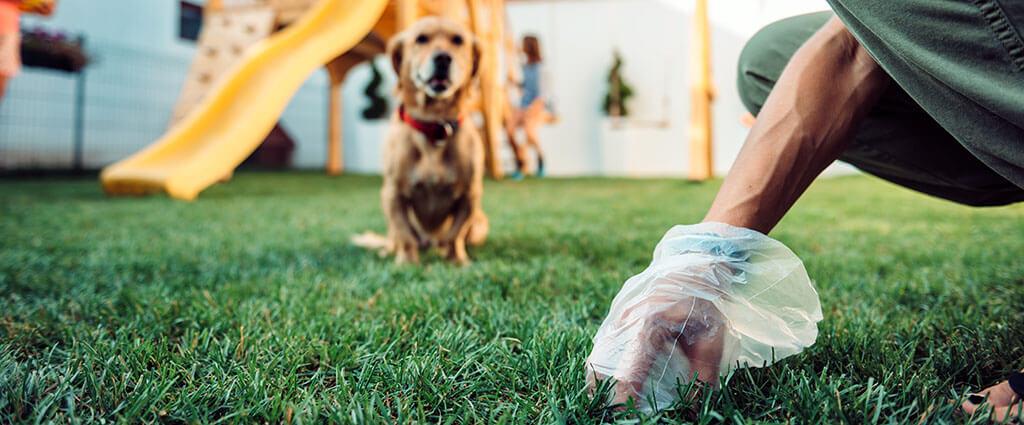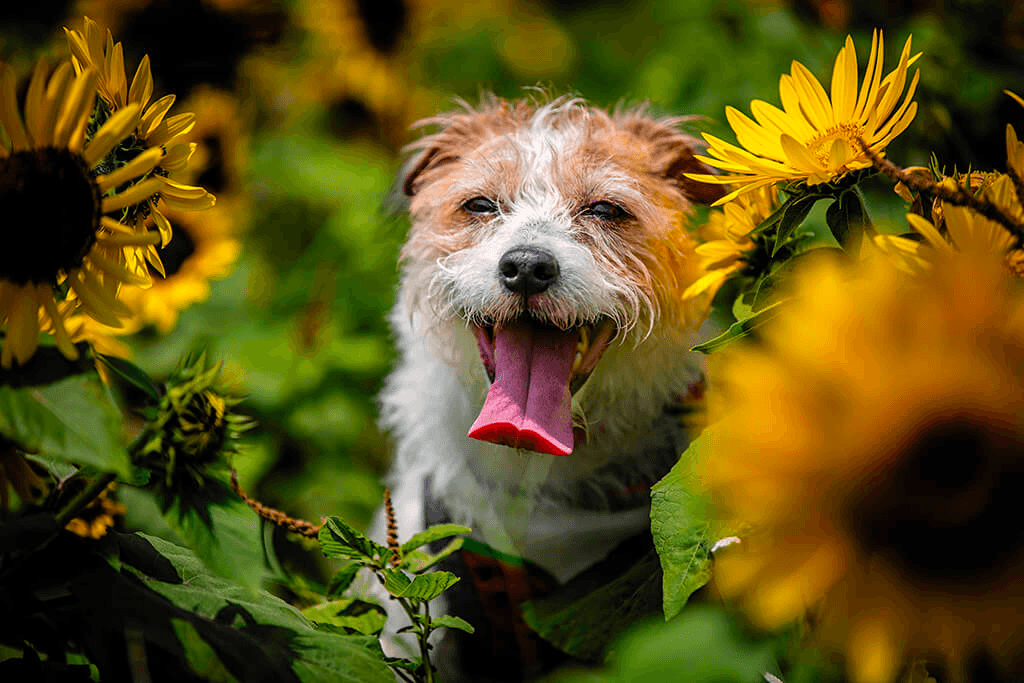You can check whether your dog’s poop is healthy or not using the four C’s: dog poop color, consistency, coating and content – here’s how!
What Does Healthy Dog Poop Look Like? Check the 4 C’s!

What Does Healthy Dog Poop Look Like?
- Healthy dog poop is a chocolatey brown color.
- If your dog’s poop is healthy, it will have a firm texture.
- Check the color, consistency, coating, and content of your dog’s poop to determine whether or not their stool is healthy.
- If you have any concerns about the health of your dog, contact your vet.
Healthy dog poop is a chocolatey brown and has a firm texture. If you are concerned that your dog’s poop may not be healthy, you can check the four C’s – color, consistency, coating, and content, to spot early signs of digestive changes in your pup’s poop appearance.
There’s a reason why vets might ask you for a stool sample, as poop can tell a lot about overall health – changes in the appearance or consistency of your dog’s stool can sometimes indicate that something’s off.
It’s normal to see a little variation in your dog’s stool every now and then, with dietary changes and fluctuating hydration levels, but if something seems off it’s important to act quickly and, if necessary, seek advice from your vet.
What Does Healthy Dog Poop Look Like? The Four C’s Infographic

There are four easy things to assess if you want to check your dog’s poop. They lie under the four C’s: color, content, consistency, and coating.
1. Healthy Dog Poop Color: Chocolatey Brown
Healthy dog poop is a chocolatey brown color. If your dog’s poop is black, green, orange, has white flecks or is entirely white, this is a sign that their poop is not healthy, and you should visit the vet. For more information about healthy dog poop color, read our article and check our printable dog poop color chart.
2. Dog Poop Consistency: Healthy Dog Poop Is Reasonably Firm
The consistency of your dog’s poop should be reasonably firm, and if you’re not sure of how it would feel…you might have to feel it. Of course, use a plastic bag or some gloves, but if the stool is rock hard or lacks firmness, the intestines may not be working properly, or your dog could be dehydrated.
Vets actually rate the consistency of feces with a numerical scale, from 1 to 7; 1 being the hard end, and 7 being more like muddy water.
Ideally, you want a number 2 (no pun intended!). Feeling firm and looking a bit like a caterpillar, so that segments separate when you press it. If the stool is too firm, that could be a sign of dehydration and would be painful for your dog to pass. If the stool is runny and doesn’t really form a shape, the large intestine may not be absorbing water properly. Having runny poo or diarrhea can also be the cause of dehydration.
Having a particularly stiff or runny poop once shouldn’t be cause for concern, but if it persists, you should seek medical attention. Ensure your dog is hydrated, and only feed them simple foods if you have concerns.
3. Coating on Dog Poop: Healthy Dog Poop Should Not Have a Coating
Your dog’s poop should not have a coating on it. When you pick it up, there shouldn’t be a trail left on the ground – for example, white mucus, which often occurs with large bowel movements or with diarrhea.
White Coating On Dog Poop
If you do see a strange white coating, film or layer in their excrement for more than 24 hours, it would be wise to take them to the veterinarian as this could be a sign of an inflammation in their bowel.
4. Content of Dog Poop: Healthy Dog Poop Does Not Contain Any Foreign Objects
Your dog’s poop should not have any foreign content. Most bacterial content can only be seen with a microscope, so it’s really a job for medical professionals! But dogs are explorers, and as they explore, they might pick up one or two things…
If you want to check their dog poop yourself, there are ways. Now, this is the least pleasant part, as it could include dissecting the poop. Again, use gloves or a bag to push the muck around, or perhaps a stick, and wash your hands thoroughly afterward. The poo shouldn’t change when you reach the middle of it; it should stay the same density throughout.
If you suspect that your dog’s stomach is suffering, these things could be sitting within their poop:
- Worms In Dog Poop: It’s best to look for these from a fresh sample, as creatures may be attracted the excrement after it’s been planted. There are two types of worms; long and skinny roundworms, and little tapeworm segments. Worms may affect your dog’s digestion, so it’s best to consult your vet if you notice them in your dog’s stool.
- Foreign Objects In Dog Poop: The more curious of the pooches out there might be roaming your garbage can without you knowing or picking up bits off the street. So if you notice pieces of plastic, socks, rocks, or food wrapping, try to keep a closer eye on where they have access to, and restrict any access to things they may consume.
- Fur In Dog Poop: You may find large clumps of hair gathered in their poo, due to over-grooming. Dogs may overgroom for a variety of reasons, including boredom or sensitivities. If you notice fur in your dog’s poop regularly, it’s a good idea to check in with your vet.
Conclusion: Healthy Dog Poop & Normal Digestion in Dogs
Your dog’s stool quality can be a reflection of their digestive health and overall wellbeing. Healthy dog poop is a consistent chocolatey brown color and firm consistency – if your pup’s stool is loose, liquid or an unusual color, it’s important to monitor things and reach out to a vet if they aren’t pooping normally again soon. Staying informed and proactive can make a big difference in helping your pup feel their best.
 C
C



